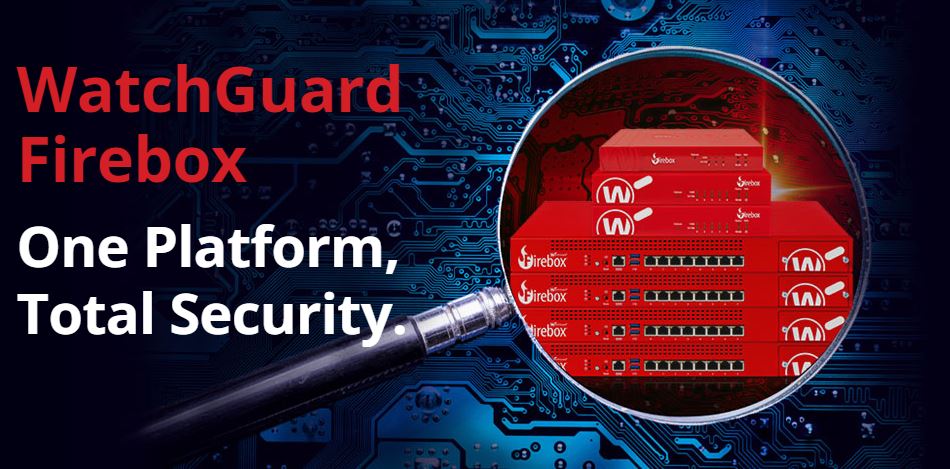Picture this: It's 2:47 AM on a Tuesday, and Sarah's phone buzzes with an emergency alert from her Hartford-based accounting firm. Her entire network is encrypted. Files are gone. Client data is locked behind a ransom demand for $75,000. The "antivirus protection" her old IT guy installed? Completely useless against this AI-powered attack that learned her company's patterns for three weeks before striking.
Sarah's story isn't unique. Last month alone, 47 Connecticut small businesses experienced similar ransomware attacks, each one believing their traditional IT support was enough to keep them safe. They were wrong.
The numbers tell a stark story: AI-powered cyberattacks now cost Connecticut SMBs an average of $254,445 per incident, and 60% of attacked businesses close permanently within six months. Even more alarming, AI-enhanced threats are three times more successful than traditional attacks because they adapt faster than basic security measures can respond.
This crisis is driving a fundamental shift in how Connecticut businesses approach cybersecurity. Companies are abandoning the outdated "break-fix" IT model and embracing defense in depth cybersecurity strategies that actually work against modern threats.

The $2.4 Million Problem: Why Traditional IT Support Is Failing Connecticut Businesses
Traditional IT support operates on a fundamentally flawed premise for today's threat landscape. Most basic IT services focus on reactive maintenance: fixing computers when they break rather than preventing sophisticated attacks that bypass standard detection methods entirely.
Here's the harsh reality: Connecticut SMBs collectively lose roughly $2.4 million annually in ransomware damages due to the gap between basic vulnerability scanning and comprehensive security monitoring. Consumer-grade antivirus software relies on signature-based detection, making it completely ineffective against AI malware that generates new signatures every few minutes.
The core problem lies in how traditional IT support approaches security. They treat cybersecurity as a one-time installation rather than an ongoing battle against constantly evolving threats. A single antivirus program, a basic firewall, and periodic software updates simply cannot compete with AI-driven attacks that study your business patterns for weeks before striking with precision-targeted exploits.
Consider the difference: traditional vulnerability scanning takes a snapshot of your security at a single moment in time. Meanwhile, AI-powered ransomware continuously analyzes your network, learns employee behaviors, identifies the most valuable data, and waits for the perfect moment to strike when defenses are weakest. It's like bringing a flashlight to fight a searchlight: the tools simply don't match the threat level.
A worrying 44% of SMBs believe their current antivirus solution fully protects their business. This false sense of security actually makes them more vulnerable because they don't invest in the layered protection that modern threats require. When basic antivirus fails: and it will fail against sophisticated attacks: these businesses have no backup defenses.
The AI Revolution in Cybercrime: Understanding What You're Really Fighting
Today's cybercriminals aren't the stereotypical hoodie-wearing hackers working alone in basements. They're organized operations using artificial intelligence to automate and scale attacks with unprecedented sophistication.
AI-driven ransomware operates differently from traditional malware. Instead of immediately encrypting files, these intelligent systems perform reconnaissance, mapping your network architecture, identifying critical systems, and learning your business operations. They analyze email patterns, identify key personnel, and even study your backup procedures to ensure maximum damage when they eventually strike.
The attack Sarah experienced followed this exact pattern. For three weeks, AI malware quietly observed her accounting firm's operations. It learned that client tax files were stored on a specific server, identified that backups ran every Friday night, and discovered that Sarah checked email first thing Monday mornings. The attack launched at 2:30 AM on a Tuesday: after backups completed but before the next cycle, ensuring maximum data loss and psychological impact.
Modern AI attacks also use machine learning to bypass security measures that would stop traditional malware. They can mimic legitimate software behavior, disguise malicious code as routine system processes, and even adapt their approach in real-time if they encounter unexpected resistance.
This is why traditional "set it and forget it" security approaches fail so catastrophically. You're not fighting static threats that can be blocked with signature-based detection. You're facing adaptive adversaries that learn and evolve faster than basic security tools can keep up.

Defense in Depth: The Military Strategy That's Revolutionizing Small Business Cybersecurity
Defense in depth cybersecurity borrows from military strategy: instead of relying on a single line of defense, you create multiple layers of protection that work together. When one layer is compromised, others continue protecting your business while automated systems respond to contain the threat.
This approach recognizes a fundamental truth about modern cybersecurity: no single security tool is perfect. Even the best firewall will eventually encounter a threat it can't stop. Even the most advanced antivirus will miss some malware. Defense in depth assumes these individual failures will occur and builds systematic redundancy to maintain protection even when specific tools fail.
For Connecticut SMBs, this means moving beyond the traditional "antivirus plus firewall" approach to implementing integrated security ecosystems. Modern managed IT services Connecticut businesses are choosing include AI-powered threat detection, behavioral analysis, automated response systems, and continuous monitoring that works together seamlessly.
Layer 1: Perimeter Protection – Advanced firewalls with intrusion prevention systems that go beyond basic port blocking to analyze traffic patterns and identify sophisticated threats attempting to enter your network.
Layer 2: Endpoint Detection and Response – Instead of signature-based antivirus, modern endpoint protection uses behavioral analysis to identify suspicious activities even from previously unknown threats.
Layer 3: Network Segmentation – Critical systems are isolated from general network traffic, ensuring that if one area is compromised, attackers can't easily move laterally to access your most valuable data.
Layer 4: User Behavior Analytics – AI systems learn normal user patterns and flag unusual activities that might indicate compromised accounts or insider threats.
Layer 5: Data Protection and Recovery – Advanced backup systems with immutable copies stored offline, ensuring that even successful ransomware attacks can't destroy your ability to recover quickly.
Layer 6: 24/7 Security Operations – Human experts supported by AI systems monitor your network around the clock, responding to threats faster than any automated system alone could manage.
The magic happens when these layers work together. When AI-powered malware tries to infiltrate a properly defended network, it might bypass the firewall, but behavioral analysis detects unusual file access patterns. It might compromise an endpoint, but network segmentation prevents lateral movement. It might encrypt local files, but immutable backups ensure rapid recovery without paying ransoms.
The Human-AI Partnership: Why Connecticut SMBs Need More Than Just Technology
The most effective defense in depth strategies combine artificial intelligence with human expertise in what security professionals call the "human-AI partnership model." AI handles routine monitoring, pattern recognition, and immediate response to obvious threats, while human experts manage complex decision-making, policy creation, and strategic planning.
This balanced approach addresses a critical gap in traditional IT support: the lack of specialized cybersecurity knowledge. General IT technicians, no matter how skilled, cannot match the expertise of dedicated cybersecurity professionals who focus exclusively on understanding and countering evolving threats.
Connecticut businesses implementing this model gain access to Security Operations Centers (SOCs) staffed by experienced cybersecurity analysts who use behavioral analytics and machine learning algorithms to identify threats that traditional security tools miss entirely. These experts don't just respond to alerts: they proactively hunt for indicators of compromise and continuously refine protection strategies based on emerging threat intelligence.
The AI component handles the scale problem that overwhelms traditional IT support. Modern networks generate millions of security events daily. Human analysts cannot possibly review every alert, but AI systems can process this data in real-time, identifying patterns and anomalies that warrant human investigation. Meanwhile, human experts provide the contextual understanding and strategic thinking that AI currently cannot replicate.
This partnership model also addresses the skills shortage that affects many Connecticut SMBs. Finding and hiring qualified cybersecurity professionals is expensive and challenging for small businesses. Managed IT services Connecticut companies provide access to entire teams of specialists without the overhead of maintaining full-time security staff internally.

The Financial Reality: Why Defense in Depth Actually Saves Money
Many Connecticut business owners initially hesitate to invest in comprehensive cybersecurity because they perceive it as expensive. This thinking reflects a fundamental misunderstanding of the actual costs involved in cybersecurity: both the cost of protection and the cost of being unprotected.
Research shows that businesses using proactive cybersecurity measures reduce breach costs by an average of $1.76 million compared to reactive approaches. Organizations using extensive AI and automation in their security operations save an average of $2.2 million compared to those relying solely on traditional methods.
Consider the total cost of a successful ransomware attack: the immediate ransom payment (if you choose to pay), business disruption costs, data recovery expenses, legal fees, regulatory fines, customer notification costs, credit monitoring services, and long-term reputation damage. For Connecticut SMBs, the average total cost exceeds $254,445 per incident: and that's assuming the business survives to calculate the cost.
Defense in depth cybersecurity spreads this risk across multiple protection layers, significantly reducing the probability of successful attacks. When attacks do occur, layered defenses typically limit damage and reduce recovery time, minimizing business disruption costs that often exceed the initial technical damage.
The economics become even more favorable when you consider business continuity. The 60% of Connecticut SMBs that close permanently within six months of a successful attack represent complete business failure: total loss of all invested capital, jobs, and future earning potential. Defense in depth strategies specifically focus on ensuring business survival even in worst-case scenarios.
Modern cybersecurity also eliminates many hidden costs of traditional IT support. Reactive "break-fix" models result in unpredictable expenses, emergency service calls, and extended downtime while problems are diagnosed and resolved. Proactive monitoring and automated response systems prevent most issues from becoming expensive emergencies.
Network Security Evolution: From Periodic Scans to Continuous Intelligence
Traditional network security approaches relied on periodic vulnerability scans: scheduled security assessments that provided point-in-time snapshots of potential weaknesses. This worked reasonably well when threats were relatively static and attacks required significant time and resources to execute.
Modern network security for Connecticut SMBs operates on continuous intelligence principles. Instead of scanning for vulnerabilities monthly or quarterly, advanced systems monitor network traffic, user behaviors, and system activities in real-time, building comprehensive pictures of normal operations and immediately flagging deviations that might indicate security threats.
This evolution addresses a critical timing problem with traditional approaches. Vulnerability scans might identify a security weakness on Tuesday, but if attackers exploit that weakness on Wednesday morning, the scan provides no protection. Continuous monitoring detects exploitation attempts as they occur, enabling immediate response regardless of when vulnerabilities are discovered or patched.
Continuous intelligence systems also provide context that periodic scans cannot match. A vulnerability scanner might identify that a particular software version has known security flaws, but it cannot determine whether those flaws are actively being exploited or whether existing security controls effectively mitigate the risks. Real-time monitoring observes actual attack attempts and measures the effectiveness of defensive measures under real-world conditions.
For Connecticut small businesses, this means moving from questions like "What vulnerabilities do we have?" to "What attacks are currently being attempted against our network, and how effectively are our defenses responding?" It's the difference between taking your blood pressure once a year at a doctor's appointment versus wearing a continuous heart monitor that alerts you to problems as they develop.
Network security implementations using continuous intelligence also provide valuable business insights beyond pure security benefits. Network monitoring data reveals productivity patterns, identifies inefficient processes, and helps optimize IT resource allocation based on actual usage rather than assumptions.

Breaking Down the Barriers: Making Enterprise-Level Security Accessible to SMBs
Historically, defense in depth cybersecurity was available only to large enterprises with substantial IT budgets and dedicated security teams. The technology required significant upfront investment, specialized expertise to implement and maintain, and ongoing operational overhead that small businesses simply could not justify.
This changed dramatically with the emergence of cloud-based security services and managed security providers. Connecticut SMBs can now access the same enterprise-grade protection systems that Fortune 500 companies use, but delivered as a service rather than requiring internal implementation and management.
Cloud-based security operations centers provide 24/7 monitoring and response capabilities without requiring businesses to build their own SOCs. AI-powered threat detection systems that would cost millions to implement internally are available as subscription services. Advanced security tools that required dedicated specialists to operate are now delivered as managed services with built-in expertise.
This service delivery model also addresses the scalability problem that traditional IT support cannot solve effectively. Small businesses need the same level of protection as large enterprises when facing sophisticated attacks, but they lack the resources to implement equivalent systems internally. Managed security services allow SMBs to share the costs of advanced security infrastructure across multiple clients while receiving dedicated protection for their specific needs.
The result is a fundamental shift in cybersecurity accessibility. Connecticut businesses with 10 employees can now implement security measures that were previously available only to companies with 10,000 employees. This levels the playing field against cybercriminals who don't scale their attacks based on target size: they use the same sophisticated tools against small businesses as they do against large corporations.
Implementation Strategies: How Connecticut SMBs Are Making the Transition
The transition from traditional IT support to defense in depth cybersecurity doesn't happen overnight, and successful implementations follow predictable patterns that other Connecticut businesses can learn from.
Phase 1: Risk Assessment and Gap Analysis – Most successful transitions begin with comprehensive assessments of current security posture compared to modern threat requirements. This involves identifying critical assets, evaluating existing protections, and determining specific vulnerabilities that need addressing.
Phase 2: Core Infrastructure Hardening – Before implementing advanced monitoring and response systems, businesses need solid foundational security. This includes network segmentation, endpoint protection upgrades, and access control improvements that create the framework for more sophisticated defenses.
Phase 3: Monitoring and Detection Implementation – Advanced threat detection systems require time to learn normal network behaviors and user patterns. Early implementation allows these systems to establish baselines before adding automated response capabilities.
Phase 4: Response Automation and Human Integration – The final phase integrates automated response systems with human expertise, creating the seamless protection that characterizes mature defense in depth implementations.
Connecticut businesses that attempt to implement everything simultaneously often struggle with complexity and integration challenges. Phased approaches allow teams to adapt to new security tools gradually while maintaining business operations throughout the transition.
Successful implementations also emphasize training and change management. Cybersecurity services for small business CT providers typically include user education and policy development to ensure that human behaviors align with technical protections.
The Competitive Advantage: How Advanced Security Drives Business Growth
Beyond protecting against attacks, defense in depth cybersecurity creates competitive advantages that many Connecticut SMBs discover only after implementation. Advanced security measures often become business differentiators that drive customer acquisition and retention.
Professional service firms find that clients increasingly evaluate cybersecurity capabilities when selecting vendors. Law firms, accounting practices, and consulting companies with demonstrated security capabilities win contracts that their less-protected competitors cannot pursue. Healthcare organizations require vendors to meet specific security standards before considering partnerships.
Defense in depth implementations also improve operational efficiency in unexpected ways. Network monitoring systems that detect security threats also identify performance bottlenecks, connectivity issues, and resource utilization problems. Automated response systems that contain security incidents also resolve many operational problems before they impact users.
The data generated by comprehensive monitoring systems provides business intelligence that traditional IT support cannot match. Understanding actual network usage patterns, application performance metrics, and user productivity trends enables more informed technology investment decisions and better resource planning.
Many Connecticut businesses discover that their investment in advanced cybersecurity pays for itself through operational improvements before considering the avoided costs of potential attacks. When you add the protection benefits, the return on investment becomes compelling from multiple perspectives.

Looking Forward: The Future of Small Business Cybersecurity in Connecticut
The cybersecurity landscape will continue evolving rapidly, but several trends are already clear for Connecticut SMBs considering their security strategies.
AI-powered attacks will become more sophisticated and more accessible to criminals. As artificial intelligence tools become commoditized, the barriers to launching sophisticated attacks will continue decreasing. This means that defense strategies must assume increasingly capable adversaries rather than hoping that small size provides protection through obscurity.
Regulatory compliance requirements will expand beyond traditionally regulated industries. Connecticut businesses should expect cybersecurity standards to become mandatory across more sectors as governments respond to the growing threat landscape. Early adoption of comprehensive security measures will provide compliance advantages as requirements become more stringent.
Cyber insurance will require demonstrable security measures rather than accepting basic protections as sufficient. Insurance providers are already tightening requirements and reducing coverage for businesses without adequate protection. Defense in depth implementations provide the documentation and capabilities that insurers increasingly demand.
The integration between cybersecurity and business operations will deepen. Security systems will provide more business intelligence, operational efficiency improvements, and productivity insights. The distinction between IT security and business optimization will continue blurring as advanced systems provide benefits across multiple domains.
Connecticut SMBs that invest in comprehensive cybersecurity now position themselves advantageously for these future developments. Those that delay may find themselves responding to requirements rather than leading with capabilities.
The Bottom Line: Why the 67% Are Making the Right Choice
While specific statistics about Connecticut SMB transitions may vary, the underlying trend is undeniable: businesses are abandoning traditional IT support models that cannot address modern cybersecurity threats. The combination of increasing attack sophistication, rising incident costs, and improving security technology accessibility creates compelling reasons for change.
Defense in depth cybersecurity represents more than just better protection: it's a fundamental shift toward proactive business management that extends beyond security into operational efficiency, competitive positioning, and strategic planning. Connecticut businesses making this transition discover benefits that extend far beyond avoiding ransomware attacks.
The question for remaining Connecticut SMBs isn't whether to upgrade their cybersecurity approach, but how quickly they can implement effective protection before becoming the next attack statistic. In a threat environment where 60% of attacked businesses close permanently, the cost of adequate protection pales compared to the cost of being unprotected.
For Connecticut business owners still relying on traditional IT support, the message is clear: the threat landscape has evolved beyond what basic security measures can address. Defense in depth cybersecurity isn't just available for small businesses: it's becoming essential for business survival in an increasingly dangerous digital world.
Ready to join the Connecticut SMBs who are successfully protecting themselves with defense in depth cybersecurity? Contact FoxPowerIT to learn how comprehensive security strategies can protect your business while improving operations and creating competitive advantages that traditional IT support simply cannot provide.

